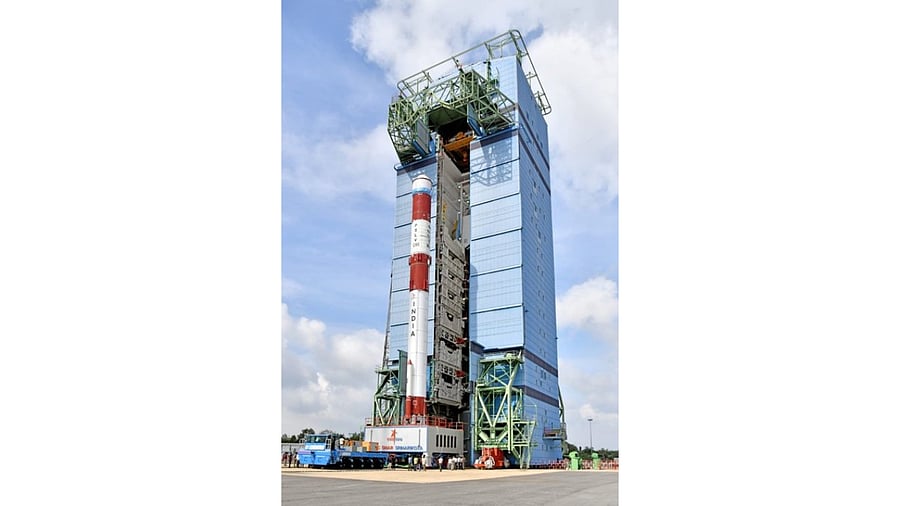
Launch scheduled on 30th December 2024, 21:58 IST from SDSC SHAR, Sriharikota.
Credit: X/@isro
Indian Space Research Organisation will launch it groundbreaking SpaDeX mission on December 30.
The agency will put two small satellites into space to demonstrate the process of docking. The launch will take place from Sriharikota, Andhra Pradesh at 9:58 pm.
India's SpaDeX mission, aims to develop and demonstrate technology required to dock and undock spacecraft.
On December 21, the launch vehicle was integrated and moved to the First Launch Pad for further integration of satellites and launch preparations.
What is the SpaDex mission?
SpaDeX mission will demonstrate 'in-space docking' using two small spacecraft launched by Polar Satellite Launch Vehicle PSLV-C60 (PSLV), ISRO said in an explainer on the subject.
In-space docking technology is essential when multiple rocket launches are required to achieve common mission objectives.
Through this mission, India is marching towards becoming the fourth country in the world to have space docking technology.
What is docking?
Docking is a process where two satellites are aligned and then joined in space.
The two satellites SDX01 (Chaser) and SDX020 (Target) will travel 470 km above the Earth's surface in a circular orbit. The inclination of the satellites will be at 55° towards the Earth. Over a period of 24 hours, the two spacecrafts will grow apart to a distance of 20 km.
Far Rendevous
The propulsion system present on Target spacecraft will be able to prevent the satellites from drifting further apart while simultaneously keeping them at a distance of 20 km. This process is known as Far Rendevous.
However, after this, the Chaser will approach the Target with progressively reduced inter-satellite distances of 5 km, 1.5 km, 500 m, 225 m, 15 m, and 3 m, ultimately leading to the docking of the two spacecraft.
After successful docking, electrical power transfer will take place between the two satellites before undocking and separation of the two satellites to start the operation of their respective payloads for the expected mission life of up to two years.
Chaser is equipped with a High-Resolution Camera which is a miniature version of the surveillance camera. On the other hand, Target has a Miniature Multi-Spectral Payload whose imaging can be used for natural resource monitoring and vegetation studies.
Target also has a Radiation Monitor mounted on it which will help in generation of a radiation database for future Total Ionization Dosimeter (TID) and Single Event Upset (SEU) measurements for space science studies, with applications in human spaceflight.
Currently, only three countries in the world—United States, Russia, and China, can dock two spacecrafts in outer space.
(With PTI inputs)
